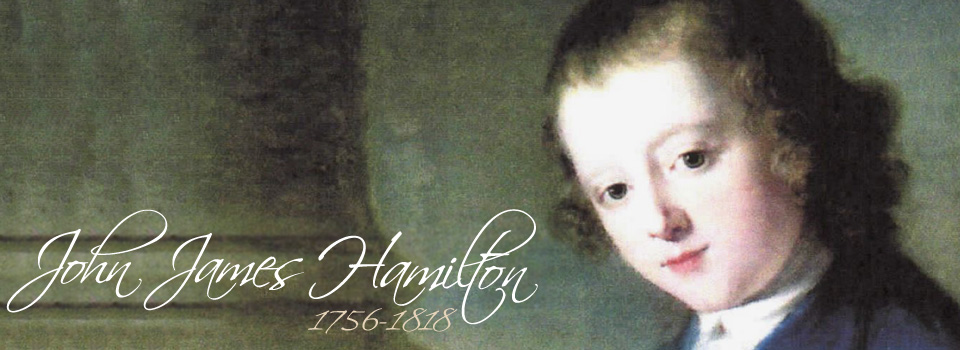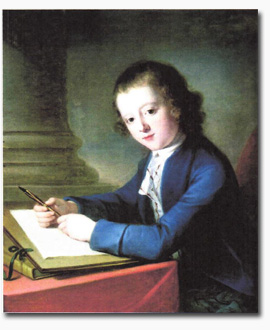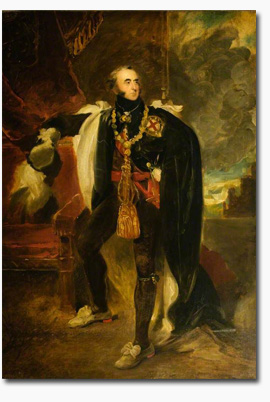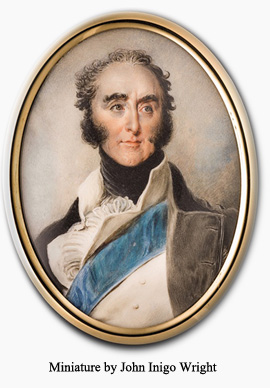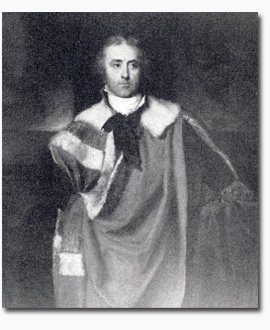John James Hamilton (1756 - 1818)
Personal Notes
— "Abercorn: The Hamiltons of Barons Court" by William J Roulston, 2014, page 90-1:
There was no member of the family quite like the 1st Marquess before him, nor has there benn one since. Anthony Malcomson, in the only recent essay that considers him in any detail, believed him to be "perhaps a fitter subject for fiction than biography". Elsewhere he has described him as "that truly proud northern leviathan". The Marquess' great-grandson, Lord Ernest Hamilton, who devoted a chapter to him in his book "Old Days and News", wrote that while he "could not, strictly speaking, lay claim to be reckoned, on all points, an exemplary character, he was, beyond question, an interesting one". A contemporary, the novelist Lady Morgan, wrote, "He was so organised to be the man he was that no education or example could have made him otherwise. Had he occupied the throne of his ancestors, he would have bee the justest despot that ever reighned." The society hostess Lady Holland observed, "He is haughty and capricious, with enough of vanity to make him do a generous action, and with a dash of madness to make him do a lively one." Many of those who have commented on him have focused on his eccentricities or behaviour arising from his undoubted pride --- stories that he insisterd his maidservants wore white gloves when changing the bed sheets or that he wore his Garter while out shooting. . . . His friend Sir Walter Scott called him "much misrepresented". The Marquess conduct at times may well have earned him the epithet "Don Magnifico" . . .
— "The Scots Peerage" (Edinburgh, Scotland: David Douglas, 1904), volume I, page 66-8:
John James, ninth Earl of Abercorn, only son of the Hon. John Hamilton, was born after his father's death, July 1756. He was educated at Pembroke College, Cambridge, where he graduated M.A. in 1776, and was elected member of Parliament for East Looe, in Cornwall, on a vacancy in November 1783, and chosen for St. Germans at the general election 1784. He succeeded his uncle in 1789, as Earl of Abercorn in Scotland, viscount of Strabane in Ireland, and Viscount Hamilton in Great Britain. On 19 Jul 1790 he took the oaths and his seat in the House of Lords in Ireland. At the general election of the sixteen representatives of the Scots Peerage, 11 July 1790, the clerks refused to receive his signed list, as he had been created a peer of Great Britain since the Union. The question was carried to the House of Lords, where, 13 May 1793, in a committee for privileges, the point was decided in his favour. Meanwhile the Earl was created on 15 October 1790, Marquess of Abercorn; and was sworn of the Privy Council in Ireland 7 February 1794. He was nominated a Knight of the Garter 17 January 1805, and installed at Windsor on St. George's Day, 23 April following. A curious account of the almost royal progress of the Marquess and his family through Scotland on their way to Baron's Court in August 1813 is given by Sir Walter Scott.*
He married first, 20 June 1779, Catherine, daughter of Sir Joseph Copley, of Sprotborough, co. York, Baronet, by Mary, duaghter of John Buller of Morval, Cornwall, and by her (who died at Stanmore Priory, Middlesex, 13 September 1791, and was buried 19 September, at Stanmore) had six children. . . .
The Marquess married, secondly, 4 March 1792, his cousin, Lady Cecil hamilton, daughter of his uncle George already mentioned, and by her had a daughter. . . .
The Marquess married, thirdly, at her brother Viscount Sudley's house in Dover Street, Piccadilly, 3 April 1800, Lady Anne Jane, relict of Henry Hatton of Great Clonard, in the county of Wexford, member of Parliament for the borough of Donegal, to whom she was married October 1783. She was born April 1762, eldest daughter of Arthur Saunders, second Earl of Arran, in Ireland, by his first wife, the Hon. Catherine Annesley, only daughter of William, Viscount Glerawley. She died, without issue, at Naples 3 May 1827. The Marquess died 27 January 1818; his will, dated 18 March 1809, with four subsequent codicils, was proved in London 9 May 1818, and was succeeded by his grandson.
* "Life of Scott" iv. 95. Sir Walter was a frequent visitor to Stanmore Priory, and while there in April 1807 was correcting a proof of the Introduction to "Marmion", Canto 1., which contains the complimentary lines on Pitt and Fox. Lord Abercorn suggested that the tribute to Fox should be heightened, and it is said he himself penned several lines of eulogy. "Familiar Letters", i. 82. The "Lady of the Lake" was dedicated to the Marquess.
Sources:
1 FMP Parish Records Collection (Scan of Original Baptism Record)
2 "The Scots Peerage" by Sir James Balfour Paul, D. Douglas, 1904, page 68
3 "London, England, Deaths and Burials, 1813-1980" (Harrow, St John the Evangelist Great Stanmore, 1818, 3 of 4) — seen on Ancestry.com
4 "The Scots Peerage" by Sir James Balfour Paul, D. Douglas, 1904, page 68
5 "The Peerage of Great Britain and Ireland" Vol. 1, Pollard, page 88
